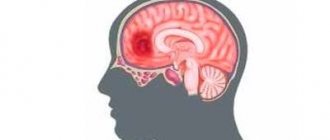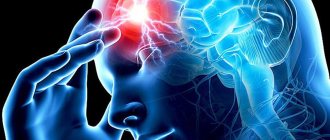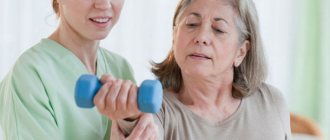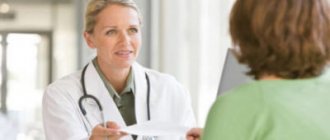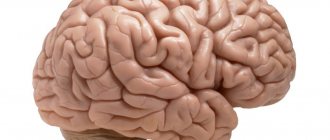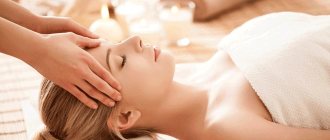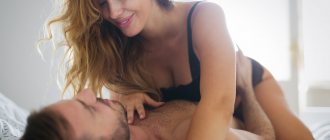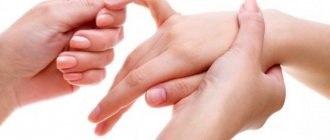March 15, 2021
When the acute stage after a stroke ends, the patient is discharged from the hospital, then a new period begins - the person’s recovery after a stroke at home.
In this article we tell you how to properly care for victims, restore their movement and cognitive functions, and provide psychological support so that rehabilitation after a stroke at home is systematic and gives the desired effect.
What to do immediately after a stroke at home?
Proper recovery after a stroke at home with the support of relatives and under the supervision of doctors brings good results. It is important to start rehabilitation immediately and not to miss the “rehabilitation window” - this is the year after the stroke, when treatment gives the maximum result.
Recovery after strokes is divided into several periods; the time may shift depending on the patient’s condition.
| The most acute period | Acute period | Early recovery period | Late recovery period | Period of residual effects |
| First 5 days | 3-4 weeks | Up to 6 months | 6-12 months | After 1 year |
Find out how to get comprehensive rehabilitation at home in St. Petersburg with an effectiveness of 95% of the intended result
To know
Return of lost speech skills
Initially, when a client loses speech, it is important to speak in principle. And after that, specialists will help you work on your diction. First of all, a neuropsychologist works with the patient, helps to identify the problem and finds ways to resolve it. But you should be prepared for the fact that complete recovery may take several years. And all this time, the patient should be observed by a specialist and perform all the necessary exercises at home. It is extremely important to stimulate the speech apparatus with various exercises, both externally and internally.
You need to start the learning process again from simple to complex. If you are unable to restore the muscles of the pharynx and larynx with the help of specialized exercises and massage, then you can use electrical stimulation using professional equipment.
Rules for caring for victims after a stroke
When a loved one has a stroke, rehabilitation at home is a high responsibility and a lot of physical activity for his relatives. It is important to prepare and create a comfortable atmosphere for the person. And then keep the order in the room and its cleanliness, prepare healthy food. Proper living will improve the mood and condition of the patient, thanks to this the person’s recovery after a stroke at home will progress.
Preparing the room and bed
After a stroke, rehabilitation at home should be comfortable for the patient. You need a spacious and bright room where there are large windows and no unnecessary noise is heard. All the furniture in the room is stable; in the future it will be a support when walking.
It is important to place a functional bed with an anti-bedsore mattress with the head of the bed against the wall so that the patient can be approached from all sides. Adjust the height of the bed, elevate the head or legs, and install protective bars to prevent the patient from falling.
The bed should consist of a pillow that supports the head, a light blanket, and a sheet without folds. Next to the bed you need a bedside table with water and necessary things for a person, and below there is a toilet chair.
While lying on the bed, let your healthy arm and leg be next to the wall so that you can see what is happening in the room through the sore side. Seeing a changing situation, a person’s affected areas of the brain are activated, accelerating recovery.
There are several tips on how to improve a person’s life after a stroke:
- arrange things at home so that the patient does not bend over or rise “on his tiptoes” behind them; long handles on brushes, brooms or mops will help avoid unnecessary bending;
- Place a damp towel or non-slip board on the table to prevent the dishes from slipping;
- support the patient’s forearm at a certain height, so his hand will not get tired quickly. This can be done using a height-adjustable table, a bed tray with legs, or a special forearm support that is attached to the armrests of the chair;
- Place a foam attachment on the handle of a brush, razor, spoon, or comb or buy a special “smart” item.
Body hygiene and the fight against bedsores
Bedsores harm the patient's recovery. They appear when the hard surface of a bed, chair, orthopedic devices, a lump from a sheet or pajamas presses on the person’s body. Bedsores can also form when moving, turning or improperly changing bed linen.
Most often, redness, blisters, like a burn, and small abrasions appear above the protrusions of the bones in the area of the back of the head, shoulder blades and sacrum. An anti-bedsore mattress, body hygiene and proper care will help to avoid the appearance of bedsores. You need to change your position in bed as often as possible, turning every two hours. It is necessary to keep the skin clean and ensure that it is not too wet or dry. You can treat it 1-2 times daily with camphor alcohol.
When caring for someone at home after a stroke, it is important to examine the patient every day. It is necessary to ensure that there are no folds or food crumbs on the sheet. When changing linen, do not pull the sheet out from under the patient, but pull it out carefully. You should not put oilcloth under your body; it is better to use diapers or an absorbent disposable sheet.
If bedsores do appear, use hydrogen peroxide to treat wounds and special ointments.
Nutrition
Food for the patient should be tasty and warm. It is necessary to take 4-5 doses a day, with dinner no later than 2 hours before bedtime. All food is prepared without salt, but sometimes the doctor allows you to add up to 5 g, he will definitely inform you about this at the appointment.
For the patient, food is prepared either boiled or baked. It is allowed to eat bread, soups, cereals, dairy products, fruits, eggs, vegetables and herbs, pasta, and for sweets - honey.
There are certain recommendations about what foods a patient can eat after a stroke:
| Can | Limit | Exclude |
| no oil | vegetable oil | lard, butter, margarine |
| red river fish | fatty fish: sturgeon, halibut | caviar |
| skinless chicken | all types of meat without fat | sausages, frankfurters, meat with fat |
| low-fat milk, kefir, cottage cheese | whole milk, cheese | fat milk, sour cream, cream |
| bananas, cucumbers, tomatoes, legumes | potato | preserves, jams |
| oatmeal, rice, buckwheat porridge, black bread | white bread, pasta | baking, muffin |
| green tea, mineral water, natural juices | sugar | chocolate, candy, pastille |
Sometimes patients after a stroke have problems swallowing. Such a person should be given soft food, not liquids, since liquids immediately enter the trachea and cause coughing. If swallowing is impaired, the patient should not be left alone; it is important to ensure that he concentrates on eating and tilts his head when chewing. A speech therapist-aphasiologist helps with swallowing problems.
Sample menu for 1 day:
Breakfast : 2 egg white omelette or oatmeal, tea or coffee with milk.
Second breakfast : boiled beef stroganoff, cottage cheese, apple or rose hip decoction.
Lunch : soup, boiled meat with vegetables, apple compote.
Dinner : boiled fish with mashed potatoes, pilaf with fruit, tea with milk. At night : a glass of curdled milk or prunes
What to do in the period from three months to six months?
After 3 months of successful recovery, the patient adapts to his condition and moves independently with the help of a stick. After 6 months, he learns to climb steps and carry light bags. Goes shopping in the store, walks, uses transport.
It is necessary to equip the patient with a telephone with quick access and put a note in his pocket indicating personal information, address and contact telephone number of relatives. These measures will add confidence to the patient and reassure the family.
Physical exercises can be performed with light dumbbells, pedaling on a simulator
During this period, it is already possible to gain lost muscle mass.
If the training of the patient’s right hand does not allow writing, then attention should be paid to mastering this function with the left hand.
Motor rehabilitation
Restoration of movements should be gradual. This path is similar to a high ladder: first you need to learn to roll over, then control your head, then sit, stand, gradually walk and increase speed.
The most important thing is not to step over these steps in order to quickly reach the pinnacle of recovery. Each missed step is harmful, so it is important to learn how to move correctly and strengthen these skills with exercises. Below we have collected some tips on what to do at home after a stroke - when and how to roll over in bed, sit down and stand up.
How to lie down and turn over
You cannot always be in a lying position, as this will strain your back, arms and legs, and this will cause pain in the body.
To reduce pain and fatigue, use pillows. If your hand hurts, place it on a soft surface with your palm facing up. The same can be done with a sore leg. Place your limb on a pillow and bend your knee. The hip will rest on the pillow, and the sore leg will not roll off. It is important that raising the head of the bed is only possible during rehabilitation of ischemic stroke at home.
Learning to turn over in bed is the first step to recovery. An assistant is needed to turn to the paralyzed side. A caregiver or relative stands on the person's affected side and helps him turn by holding his healthy shoulder, knee or hip.
When and how to sit down and stand up
If the patient can sit up, change the position every day. It is necessary to move closer to the head of the bed and sit up straight, and distribute the weight evenly on both buttocks.
After the doctor's permission, you should learn to change seats. In the future, this skill will help you use the bathroom and toilet and be more independent. When transplanting for the first time, you need to monitor every movement in order to accustom your body to the correct technique. It is necessary to place your feet shoulder-width apart in one line, move your legs to the legs of a chair or armchair. Lean forward, resting your hands on the armrest, then straighten up and, maintaining your balance, gradually stand up, straightening your legs.
After a stroke, special training will help you recover at home. The number and time of their implementation are prescribed by the doctor, but you can use simple exercises yourself.
Therapeutic exercises to restore movement:
Each exercise should be done 4-6 times under the supervision of relatives or a caregiver.
Lying on your back, place your arms along your body, calmly inhale and exhale:
- Flex your feet vigorously, tensing your legs;
- make wide circular rotations with your feet in both directions;
- lift your legs up one by one;
- alternately bend your legs at the knee, clasping them with your hands;
- straighten your limbs.
Sitting on a chair:
- simultaneously and alternately rise onto your toes, straining your calf muscles;
- straighten your legs forward with tension in your hips;
- sit on the tip of the chair, holding onto the seat, move your straight leg to the side one at a time.
While standing, walk in place:
- raise your knee higher;
- lower your arms and rotate your straight arm in and out;
- put your hands on your belt, slightly bend your torso to the side;
- step forward, spreading your arms to the sides.
How to improve coordination of movements
After a stroke, areas of the brain that are responsible for coordinating movements are often damaged. As a result, the patient may lose his balance when standing, sway when walking, and move his arms randomly. To improve coordination, you can do daily training.
Exercises to improve coordination of movements:
- throw an object at a target. Gradually you need to increase the mass of the object, move the target away and reduce its area;
- swing movements in large joints, turns and tilts of the body, according to the patient’s condition;
- eye movements in different directions with a motionless head, also depending on the patient’s condition.
Self-massage
A patient after a stroke needs massage. It calms the body and reduces pain. Only a specialist can use the correct technique, but sometimes self-massage can be done to improve the patient’s condition. It consists of four actions: stroking, rubbing, kneading and vibration.
When stroking, the hands move evenly over the massaged area and glide easily over the skin. You need to move from the fingertips to the armpit, on the back - from the lower back upward, in the lumbar region - from the spine to the sides, the joints are massaged in a circle in any direction.
Rubbing is more effective than stroking. It increases blood circulation and improves tissue nutrition. Rubbing is performed using the same technique as stroking, only a little stronger.
Kneading is a complex technique and should be done carefully. Performed with the palm, fist, several fingers, thumb.
Vibrating massagers are used for vibration. Shock movements with vibration increase muscle tone.
There are some tips that will help you do self-massage correctly and avoid mistakes:
- massage movements should not cause pain. After correct movements, there are no bruises and the skin is not damaged;
- the duration of self-massage is from 3 to 25 minutes, depending on the patient’s condition;
- The patient’s position should be comfortable, all muscles of the massaged area should be relaxed;
- You cannot do self-massage during feverish conditions, during inflammatory processes, in areas where there is eczema, lichen, boils, fungus, thrombophlebitis, varicose veins;
- you can use products for better glide. But it is better to perform self-massage simply with clean, warm hands.
How to restore swallowing?
Patients themselves associate swallowing problems with sensitivity on only one side of the mouth, the lips. Therefore, they cannot fully swallow food, choking and coughing.
Training will help restore sensitivity to the required level by doing the following exercises:
- imitation of the swallowing process with an empty mouth;
- yawning, opening your mouth wide;
- gargling with plain water;
- coughing;
- the patient puffs out his cheeks and holds the condition for a few seconds;
- pronouncing the long sound “i” while simultaneously tapping the larynx with your fingers.
Restoration of cognitive functions
After a stroke, the patient often experiences speech and memory impairments. It is important to pay special attention to this, since impaired cognitive functions make it difficult to communicate normally and cause strong feelings.
How to get your speech back
After a stroke, many patients experience speech impairment. Disorders manifest in the patient while he is still in the hospital. Most often, recovery is carried out by a speech therapist at the hospital, or you can invite a doctor to your home.
The specialist works with the patient himself and gives recommendations to the family or caregiver on how to help perform the exercises. It is important for loved ones to change their behavior in everyday life so that the person’s speech recovers faster. You need to speak more slowly than usual, use simple words and phrases, accompany them with gestures and, if necessary, drawings. You can give the patient a notebook and pencil, ask him to write a series of numbers, letters, or his own name. Near each piece of furniture in the house it is necessary to put a card with its name, so the patient will remember the words again.
Useful tips to help a person restore speech:
- involve him in the conversation: say hello and goodbye;
- if there is a discussion, make sure that the patient listens and participates at least non-verbally;
- if there is a discussion, make sure that the patient listens and participates at least non-verbally;
- if it is difficult for a person to name some objects, use their names more often in your speech;
- As the patient recovers, correct his speech errors. Increase his vocabulary;
- Monitor the patient's emotions. If the person becomes upset or irritated, change the subject.
How to resist memory changes
After a stroke, it will be more difficult to solve ordinary problems. To return to your normal routine, you need to divide all tasks into small subtasks and take your time. It’s worth planning your day, setting aside more time to complete a task, focusing on only one thing and taking breaks to rest.
Several rules of behavior for the patient that will help him restore his memory and feel better:
- take care of your brain. Do not overload it, and if you feel that you are tired and have begun to think more slowly, rest;
- remove everything unnecessary. If you are busy with important work, choose a quiet place where you will not be distracted;
- concentrate on only one thing;
- get rid of anxiety. Restless thoughts interfere and distract. Often it is sadness, apathy and depression that interfere with memory functioning. It is important to concentrate on interesting activities, develop talents, and be more in nature if your health allows it. Pleasant actions distract from negative thoughts. It is important to change the attitudes: “I no longer need a good memory” or “I am not able to improve my memory” are not suitable.
Exercises to train attention and memory
- describe your yesterday minute by minute, recreate the complete picture of that day. If you forgot something, be distracted by something else or take a rest. After half an hour, return to the exercise and try to remember again;
- Make a mental shopping list, imagine what the products look like: their color, size, packaging. After an hour, try to reproduce this list;
- close your eyes, imagine the number 1. When you see it clearly, erase it and imagine 2 in its place. Do this until 10.
Psychological support
An important point in rehabilitation after a stroke at home is the patient’s motivation. His optimistic attitude and desire to achieve his rehabilitation goal.
After a stroke, care at home should be psychologically comfortable. A person who has had a stroke may have problems controlling their emotions. He may often get angry, cry, scream and laugh. Such a person's mood changes quickly, he may be depressed or confused, experiencing anxiety, fear, frustration, hostility and anger. Psycho-emotional disorders can hinder recovery of health.
At such moments, the patient cannot be left alone for a long time; you need to talk to him, even if it seems that he does not hear or does not understand you. You should definitely involve him in household chores, for example, asking him to help peel potatoes or serve an item, if possible.
Be sure to walk with the patient, leave the house more often, so that he feels part of society. If a person cannot walk yet, invite acquaintances and friends to visit so that he can see other people and communicate with them.
If you follow all these tips, the patient’s recovery will progress, rehabilitation after a stroke at home will have its effect, and the person will definitely achieve the goals that the doctor prescribes for him.
You will see certain signs that the patient is getting better:
- shows interest in the environment, becomes proactive;
- sits down and walks on his own with a walker or without orthopedic devices at all;
- does some things independently: can wash the dishes or prepare a salad;
- expects your arrival at the appointed time or remembers an appointment, for example, on Tuesday at 14:00;
- can find a word in a dictionary or a name in a notebook;
- follows his own meal and medication schedule.
Possible negative consequences of cerebrovascular accident
Apoplexy is one of the most severe and dangerous types of cerebrovascular insufficiency, in which the optimal amount of blood ceases to flow into the human brain.
As a result, oxygen ceases to flow into organs and systems, which leads to oxygen starvation and various neurological disorders. The initial sign of the onset of the disease is thrombosis, rupture of blood vessels due to vascular insufficiency. The most common negative consequences of such an apoplexy are lack of oxygen, death of neuronal brain cells, and internal hemorrhage.
The attack itself lasts a day or more. And during its onset, the patient must be urgently taken to the hospital, where he will be under the supervision of a team of qualified doctors. It is the timely call of an ambulance, the help of doctors and subsequent rehabilitation that is extremely necessary, since the process of death of brain cells is extremely dangerous and continues even after the main symptoms of pain have already passed.
What is the danger of having an attack?
- Partial or complete loss of physical activity, as the command to the limbs is given by the affected brain.
- Mental disorder, loss of speech and cognitive abilities.
- Memory loss, temporary or complete amnesia.
- Impaired coordination of movements and fine motor skills.
- Complete or partial loss of vision.
- decreased immunity, infectious diseases, etc.
In each specific case, such dangerous consequences manifest themselves to a more or less pronounced degree, while some are absent. This depends on focal or complete brain damage, which directly affects the possibility and duration of recovery.
Relationship
A stroke does not only affect you, but also those around you. Your relationships with others may become difficult and may be affected by how you feel. Your family and friends will try to understand how you feel and you should be honest with them. By telling them about your feelings and trying to understand what they feel, you can help yourself. Adapting to life after a stroke will lead to some changes in your life and in the life of your spouse, and this can then lead to stress in your relationship. Emotional changes, changes in your body and difficulties in relationships can also affect your sex life.
